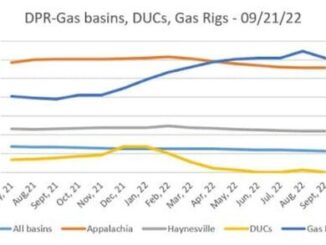
As global energy markets grapple with persistent warnings of an impending oil glut in 2025 and 2026, strong demand signals from Asia’s two giants—China and India—are providing critical support to crude prices and challenging oversupply narratives.
Despite forecasts from agencies like the International Energy Agency (IEA) projecting surpluses of up to 2-4 million barrels per day (bpd) next year due to surging non-OPEC+ production and slowing demand growth elsewhere, China’s aggressive stockpiling and India’s record-high imports are absorbing significant volumes of crude, alleviating immediate glut pressures.
China’s Stockpiling Surge: More Than Meets the Eye
China, the world’s largest crude importer, has defied expectations of peaking oil demand by ramping up purchases throughout 2025. While underlying consumption growth has moderated amid economic headwinds and the rise of electric vehicles, Beijing’s strategic focus on energy security has driven unprecedented stockpiling.
Imports Holding Strong: Through the first nine months of 2025, China’s crude imports averaged around 11.3-11.5 million bpd, with monthly figures frequently exceeding 11 million bpd (e.g., 11.5 million bpd in September). This represents a year-on-year increase in several months, supported by discounted Russian and Iranian barrels.
Massive Stock Builds: Analysts estimate China added over 1 million bpd to inventories in key periods, with surplus crude (imports + domestic production minus refinery runs) reaching 1.4 million bpd in mid-2025. New legislation enacted in January 2025 mandates state and private companies to bolster reserves, transforming commercial storage into de facto strategic assets. Satellite data shows above-ground stocks hitting record highs, with plans for additional capacity of 169 million barrels across new sites.
This stockpiling, often at rates of 900,000-1 million bpd, has effectively removed hundreds of millions of barrels from the global spot market, preventing a sharper price collapse despite OPEC+ unwinding cuts and robust output from the Americas.
India’s Relentless Demand Growth Takes the Lead
While China’s demand may be nearing a plateau (with some forecasts suggesting a peak as early as 2025-2027), India has emerged as the undisputed engine of global oil consumption growth.
Record Imports and Consumption: India’s crude imports hit all-time highs in 2025, averaging close to 5 million bpd and surpassing that mark in several months (e.g., over 5.1 million bpd in March). Full-year fiscal 2024-2025 imports reached 242 million tonnes, up 4.2% year-on-year, with import dependency climbing to a record 89-90%.
Demand Drivers: Strong economic expansion, rising vehicle ownership, and industrial activity have fueled 3-4% annual growth in oil demand. OPEC projects India to add 239,000 bpd in 2025, far outpacing China’s sluggish outlook. Transportation fuels like diesel and gasoline, along with LPG for cooking, remain key growth areas.
India’s refiners, including private giants like Reliance, have capitalized on discounted Russian supplies (often 30-40% of imports) while diversifying to Middle Eastern grades, helping clear regional oversupply.
Alleviating the Glut: Asia Absorbs the Excess
The IEA and others warn of a “record glut” in 2026, with global supply growth (3+ million bpd in 2025 from non-OPEC+ leaders like the U.S., Brazil, and Guyana) outstripping demand (barely 700,000-1 million bpd). Yet China and India’s actions are directly countering this:
Combined, the two nations account for the majority of incremental global demand and surplus absorption in 2025.
Recent U.S. sanctions on Russian oil have redirected flows, prompting higher purchases of Middle Eastern and African crudes—clearing cargoes that might otherwise languish.
Result: Visible inventory builds have been concentrated in opaque Chinese storage, masking the full extent of the surplus and providing a floor under prices.
Without this Asian demand buffer, Brent crude—currently trading around $64-65 per barrel—could have dipped into the $50s much earlier.
Outlook for Oil Prices: Volatile but Supported Range Ahead
Heading into early 2026, prices face downward pressure from inventory builds, but Asia’s role limits the downside.
Short-Term (Next Few Months): Brent likely trades in a $60-70 range through Q1 2026, supported by seasonal demand, potential OPEC+ pauses on hikes, and continued China/India buying.
Risks include deeper economic slowdowns or faster OPEC+ supply returns.
2026 Average Forecasts: EIA sees ~$55/b; others range $60-65/b. Glut could intensify if stockpiling slows, but geopolitical tensions or sanction disruptions offer upside surprises.
What Investors Should Watch
Chinese Stockpile Data: Monitor satellite imagery (e.g., Kayrros, Ursa) for builds—slowing rates signal weaker support.
Indian Import Trends: Monthly PPAC data; sustained 5+ million bpd imports = bullish.
OPEC+ Decisions: Any extension of cuts beyond the current pauses could tighten markets.
Sanctions Impact: U.S. measures on Russia/Iran—could reroute more discounted oil to Asia, sustaining demand.
Global Inventories: OECD stocks and floating storage; sharp rises without Asian offsets = bearish.
In a world awash with oil, China and India’s unyielding appetite—whether for immediate use or future security—remains the market’s lifeline. For now, glut fears may be overstated, but Asia’s demand strength ensures they’re not yet a crisis.
Energy News Beat Channel – Staying ahead on global energy trends.
Got Questions on investing in oil and gas?
ENB Top News
ENB
Energy Dashboard
ENB Podcast
ENB Substack







Be the first to comment